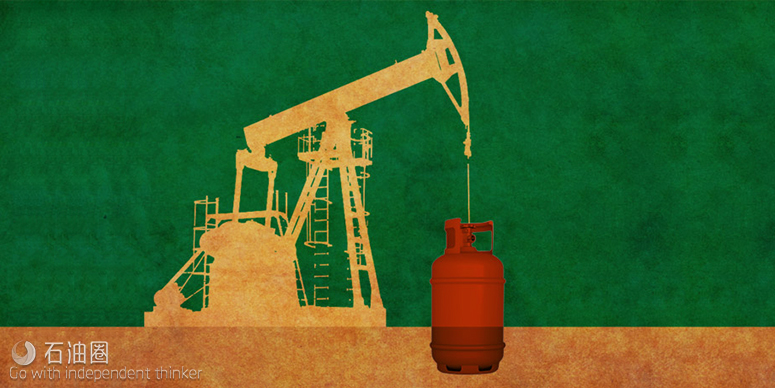In a certain range of pressure and temperature conditions, natural gas and water interact to form solid gas hydrates. Such gas hydrates are associated with permafrost onshore, and nearly one-quarter of the global landmass is underlined by permafrost. Sediments below water depths of 300 meters or more are also suitable for forming gas hydrates.
Resource estimates on gas hydrates are staggering, running to thousands of trillions of cubic feet in place. As the gas molecules are tightly packed in, one cubic foot of hydrate will release somewhere between 165 and 180 times that volume of gas as it dissociates at the surface.
Estimates range over many orders of magnitude, so there is a great deal of uncertainty,” says Timothy Collett, senior scientist at the US Geological Survey (USGS). “There is a general belief by researchers that there’s more natural gas in natural gas hydrates than all other hydrocarbons out there. It’s the largest potential source of natural gas in the world.”
Ray Boswell, geologist at the US Department of Energy’s National Energy Technology Laboratory (NETL), says one of the chief advances in the last few years has been in refining estimates of existing resources.
“We’re moving toward what is technically recoverable from what is in place,” Boswell says. “With this shift, we’ve gone from hundreds of thousands of trillion cubic feet to thousands.”
In other words, the estimates no longer include every single molecule of methane encased in hydrate in the Earth, but rather those thought to exist in commercially viable quantities. Scientists believe most of the global gas hydrate occurs in the uppermost hundreds of meters of sediments at ocean water depths exceeding 500 meters and close to continental margins.
“We’re trying to evaluate it. We’re not trying to sell it. We’re trying to do the science,” Boswell says.
IN-DEPTH VIEW
“A gas hydrate reservoir starts in its worst condition and gets better. As we remove the hydrate, the reservoir permeability is increasing.” Ray Boswell, NETL
Locked in
The different locations where gas hydrates exist and their relative ease of production can be best represented on a pyramid, with the biggest concentrations, but most difficult to produce, at the base. An estimated 90% of gas hydrates are thought to exist in marine clays and shales. “But there is no foreseeable way to produce that,” Collett says. The middle layer of the pyramid would represent hydrates in fractures and clay systems. “There is no clear technology to produce them,” he adds. At the top of the pyramid are gas hydrates embedded in sand reservoirs, which can be produced through depressurisation.
An added bonus in sand-rich reservoirs is that high saturation of gas hydrates creates the strong physical properties contrasts that make these deposits detectable in standard geophysical data, Boswell says.
Three major processes could be used to produce gas hydrates commercially, Boswell says — depressurisation, thermal stimulation and chemical injection. Over the last decade or so, tests have shown reservoir depressurisation to be the most viable of those options. With a reduction in reservoir pressure, gas hydrates “go out of stability” and dissociate into gas and water as they are drawn to the well. The chemical reaction cools the reservoir so the occasional application of heat may also be needed.
“There is a major misconception that because it involves a phase change that it is somehow unstable or unpredictable. That’s just not true at all. It’s like melting an ice cube. The physics are well understood.”
A hydrate does not want to be destabilised, he notes, so if the pressure is increased, the gas and water molecules reassociate into the hydrate form.
“As it takes in the heat, everything around it gets colder. That’s another force trying to drive it back to stability,” he says. “The big challenge is coming up with system that will allow you to maintain the reservoir in the conditions where the hydrate is dissociating.”
Collett agrees. “The real problem is driving dissociation” once the reservoir cools to a point that would slow production rates.
Thermal stimulation would not necessarily be a primary production method but a component of an overall production plan. At any rate, the well would resemble a typical oil and gas production well.
“There would be nothing unique about that well to most engineers,” Collett says, adding most of the exploration and evaluation tools and technology would be off the shelf.
“There is a general belief by researchers that there’s more natural gas in natural hydrates than all other hydrocarbons out there.” Tim Collett, USGS
Ongoing research
Predicting how gas hydrate wells will produce is still in the early stages, as few well tests have been carried out.
“Engineers can tell you how hard it is to predict a well’s performance in an instance where they’ve got tens of thousands of well histories. Here we’ve got six wells where the productive life can be measured in days,” Boswell says.
Initial models predicted gas hydrate wells would “produce a lot of gas, but over a long time at relatively low rates, and you might have a very long wait before the first gas showed up”, he says. “We are now seeing there doesn’t seem to be much of a lag time.”
Modeling suggests commercially viable rates are possible. “Every time we go out, we find something that is encouraging about potential rates,” Boswell says. “A gas hydrate reservoir starts in its worst condition and gets better. As we remove the hydrate, the reservoir permeability is increasing. Most reservoirs are the best they’re going to be the day you put them online and they degrade.”
While challenges remain, researchers have made great strides in detecting gas hydrates that could be produced. Projects in the US include efforts in the Gulf of Mexico and Alaska.
Boswell says gas hydrates are best found using much the same approach the industry uses for conventional accumulations. This translates to seeking direct geophysical evidence for the prospects and mitigating risks inherent in geophysical interpretation through evidence of gas generation and migration into favorable reservoirs.
This approach, he says, replaces the “bottom-simulating reflectors” that provide “fairly reliable indicators of the base of hydrate stability but are not good indicators for any actual prospects”. Strong bottom-simulating reflectors may in fact be contra-indicators, in that they infer a diffuse and pervasive gas flux and not the focused gas migration that is most amenable to forming rich deposits.
Research projects also seek to determine whether the natural release of methane from gas hydrates in response to global warming is occurring, Boswell notes.
A 2005 hydrates joint industry project aimed to develop technology and data to characterise gas hydrates in the deepwater Gulf of Mexico. A 2007 project on the Alaskan North Slope involved a vertical stratigraphic test on the Mount Elbert well to determine the validity of pre-drill seismically based predictions of gas hydrate occurrence and reservoir quality.
A 2009 Gulf of Mexico project confirmed gas hydrates occur at high saturations within reservoir-quality deepwater sands in two of three sites drilled. In 2012, a drilling programme in Alaska tested the implications of injecting carbon dioxide into gas hydrate reservoirs.
According to Collett, projects in both Alaska and Japan have shown that simple depressurisation is an effective means of producing gas hydrates during short tests.
More recently, the India National Gas Hydrate Program Expedition 02, carried out last year off the eastern coast of India, explored for targets for future production tests. The USGS and NETL provided scientific support for the expedition. Forty-two holes in the Krishna-Godavari and Mahanadi Basins were drilled in water depths of 1500 to 2800 metres, and extensive logging data and core samples were collected.
According to NETL, the nature of the discovered gas hydrate occurrences in these wells “closely matched pre-drill predictions” for both basins. Further, the acquisition of closely spaced LWD and core holes “have provided one of the most complete three-dimensional petrophysical-based views of any known gas hydrate reservoir system in the world.”
Boswell says the NETL hopes to be involved with upcoming field programmes in the US and abroad that will advance the understanding of gas hydrate response to depressurization over longer time-frames than has been achieved to date.
As Collett notes: “What the world is focused on now is more production testing of these accumulations.”


 石油圈
石油圈

